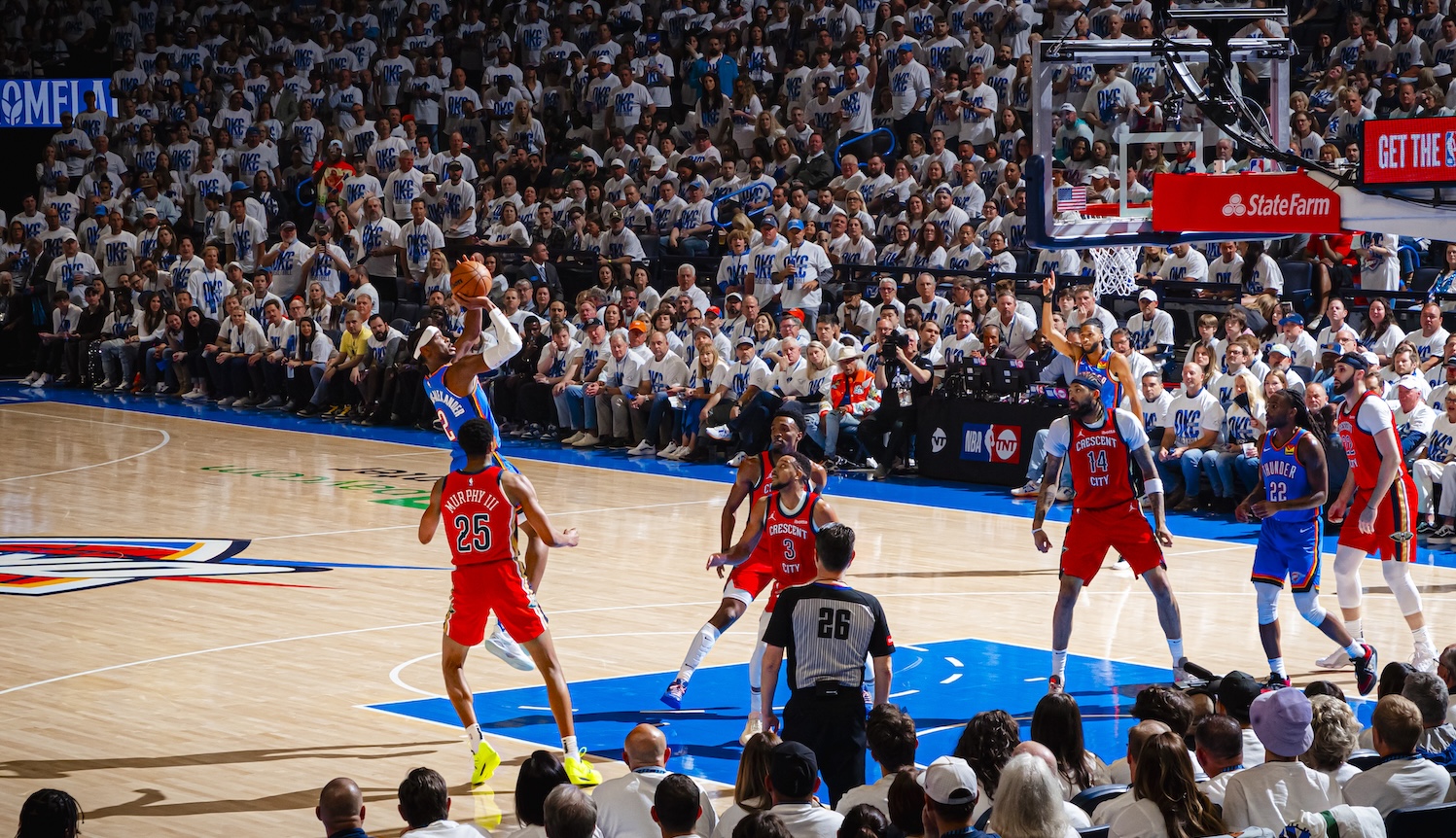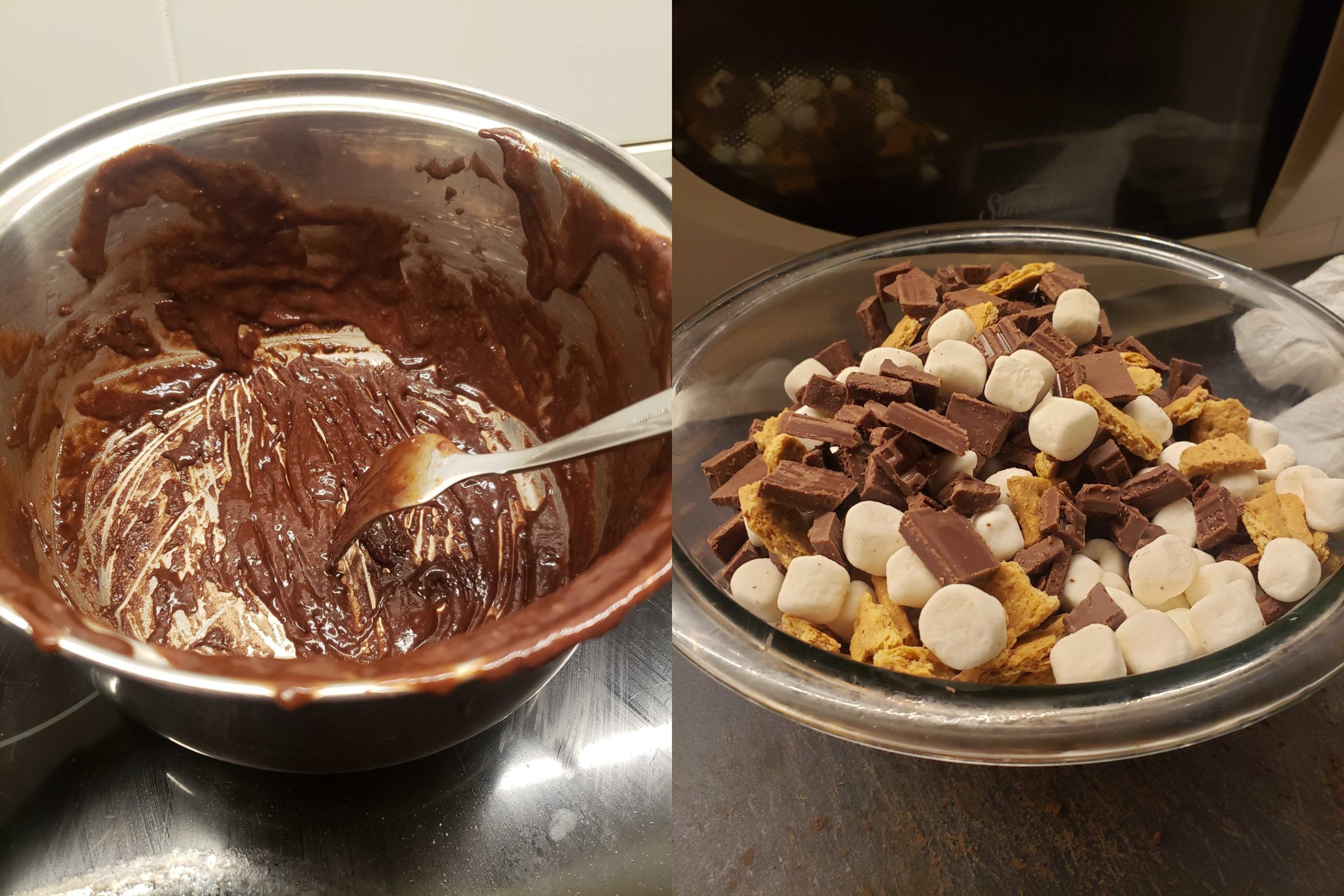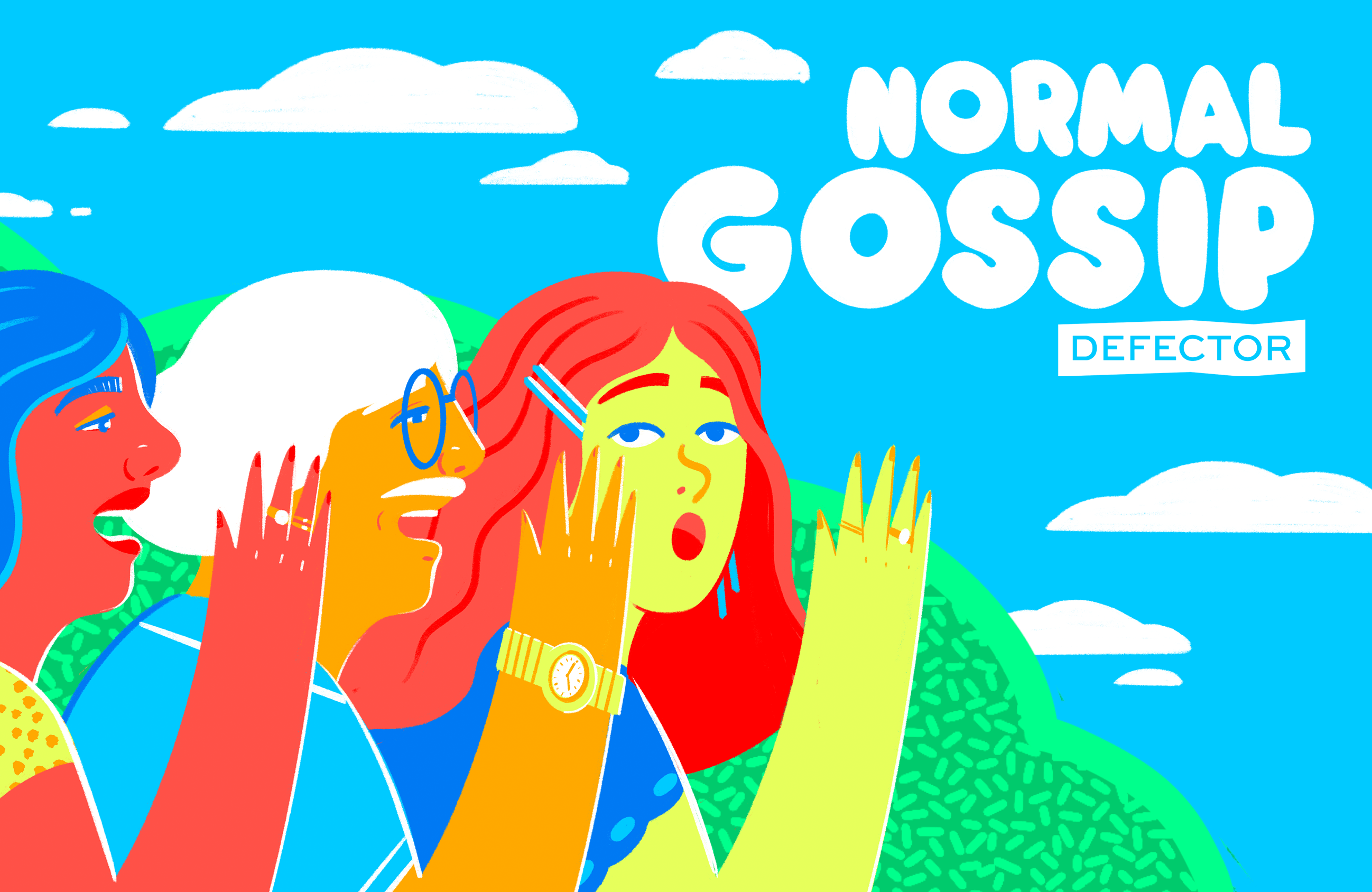One somewhat nebulous criterion I like to use in evaluating teams in the playoffs is: How painful does it look to have to play these guys? When I watch the Knicks do hand-to-hand combat and vacuum up every single rebound, I feel their opponents' bruising through the screen. LeBron James briefly turning into a crying-face emoji after Michael Porter Jr. hits a huge three? That guy's experiencing more acute psychic agony than you ever will. Not all strong teams induce pain (Boston, Cleveland) and not all sadistic teams are great (Orlando, Lakers), though I will always feel more optimistic about the chances of a team that makes their opponents wince. The Thunder as a unit and Shai Gilgeous-Alexander as an individual have been extremely impressive in that regard.
It was but a week ago when every national NBA show couldn't shut up about how the Thunder were the weakest one-seed they'd ever seen. A substantial degree of that is the "I'm pouring honey on you GOAT" industrial complex doing its thing, though there's admittedly not a strong precedent for a team this young and inexperienced going nuts in their first playoffs together. Yes, SGA and OKC won 57 games in the regular season, but they can't grab a single rebound and their one functional guy taller than 6-foot-9 is the 12th-heaviest member of the team. It was easy to imagine them getting bullied. That line of reasoning, however, omits the possibility that the Thunder themselves are capable of bullying; in other words, that they might be the sort of team that inflicts pain.
There is more than one way to do that, and the way the Thunder do it is pretty simple. The Thunder are relentless going to the basket. All they do is attack, fearlessly, from all over the court. For four straight seasons, the Thunder and SGA have led the league in drives per game among teams and players. They have built a coherent identity of players who can pass and make quick decisions, enabling them play a turbocharged version of five-out that's designed less around cashing a bunch of threes and more towards creating the maximum possible number of angles and opportunities for attacks on the basket. If someone doesn't have an advantage, they give it up quickly, and their level of connective passing is as high as I have ever seen. They've played like this for years, if never more effectively than they are now.
It helps that Chet Holmgren has spurred on a stunning defensive improvement, and that Jalen Williams is developing into a star, and that they slowly added enough shooting until they became the best three-point shooting team in the league. But it all starts with Gilgeous-Alexander, who will finish a strong second in MVP voting this year. SGA's development into one of the best six or so players in the league has been an interesting one, as he began his career starting as a rookie for the weird, doomed Clippers squad that bridged the Lob City era to the Kawhi era. He was then traded for Paul George (and, effectively, Kawhi) and played one season on the totally bizarre and entertaining three point guard Thunder before OKC hit the eject button and began what wound up being a shockingly brief tank-out. After leading two bad iterations of the Thunder and one mediocre one, Gilgeous-Alexander is now the best player on the number one seed in the varsity conference. Which is to say, while this campaign feels like his playoff debut, it's not, it only feels like it.
He's clearly ready. In a Game 1 grindfest in which the two teams shot a collective 40 percent, SGA led all scorers with 28. OKC was in control of that game until they got tight towards the end, somehow going five minutes without a bucket. When his team couldn't get anything out of their usual slice-and-dice slow, SGA went to work, first hitting a midranger over a backpedaling Herb Jones, then nailing a ridiculously acrobatic game-winner over CJ McCollum. In Game 2, the Thunder played like themselves and blew New Orleans out, though the Pelicans hung around just long enough to keep it reasonably competitive until late in the fourth quarter. What I was struck by in Game 2 was how reliably SGA would score every time the Pelicans made a run. New Orleans would cut the lead to 14 or 12, then get back and visibly lock in on defense, running a little harder, snapping in and out of switches a little faster; this is how teams come back. And all three or four times that happened in the second half, SGA would simply cook Herb Jones off the dribble and get to the cup. He never let his opponents get any momentum. It was masterful stuff, and SGA did it against a guy who used to give him more problems than anyone.
SGA is not quite unguardable, since he's an average three-point shooter, but he's pretty close. His athleticism is less explosive than it is slithery. He manages to stay balanced at incredible speeds, while throwing these flurries of fakes, half-moves, and herky-jerky little changes of direction at defenders, such that the best way to defend him is to simply stay down on anything that looks like it could be a shot attempt. He gets to the line enough to annoy people, and he scores from the midrange well enough to charm the revanchists. The word with him is creativity. He's crafty both around the rim and on his way there, and because he's so good at shooting off pull-ups—or, in the case of that Game 1 game-winner, fall-downs—there's always an element of surprise latent in every SGA drive. It's fun to watch a technician like this cook, and it turns out that it totally works in the playoffs.
The magic of the Thunder is their strength as a collective, a charging, barking, occasionally meowing collective. They love each other and conduct all their interviews together and generally behave like a college team. A certain old-school set will always roll its eyes at that, but to mistake that youthfulness for unseriousness would be a mistake. The moment that popped the most in Game 2 was when Holmgren put his shoulder into Brandon Ingram, dunked on an empty hoop, and tried to raise the roof directly on top of his opposite number's grimacing body. These guys mean business.





